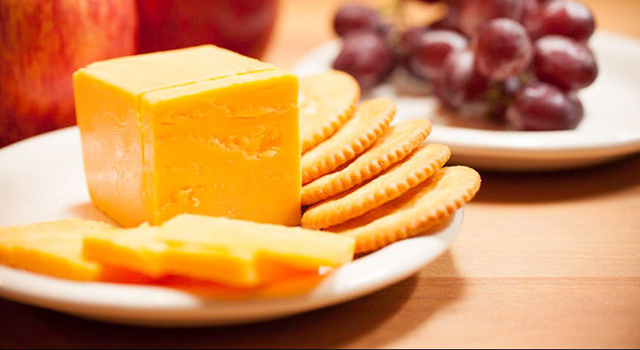People are diagnosed with Barrett’s esophagus when the tissue cells in their lower esophagus change. Instead, the tissue cells resemble that of the intestinal lining.
Symptoms include heartburn, trouble swallowing, and GERD-related symptoms.
Doctors aren’t sure why people get Barrett’s esophagus, although most patients with this condition have had GERD for a long time.
Acid reflux increases a person’s risk of developing both of these conditions. Below are some dietary recommendations that may help with managing symptoms of Barrett’s esophagus.
Food & Nutrition Diet (Meal Plan) for Barrett’s Esophagus
#1 Recommended Breakfast Diet for Barrett’s Esophagus

Getting enough fiber is an important part of preventing symptoms from worsening. This nutrient is also crucial for overall good health.
Breakfast is a great time to get fiber, as all types of fruit contain this nutrient. Fresh fruit is always best, although frozen fruit and dried fruit are okay, too.
Oats are the perfect breakfast food because they’re versatile, easy to prepare, and they contain lots of fiber. Besides that, they’re full of whole grains and a decent amount of protein.
Plain oatmeal with a side of fresh fruit is one example of a fantastic, nutrient-dense breakfast.
#2 Recommended Lunch Diet for Barrett’s Esophagus

Whole grains are packed with fiber, so they help to keep people fuller longer.
Incorporating whole grains into a lunchtime meal is one way to fill up on nutrients and build a satisfying menu. Whole wheat bread or pasta, or even brown rice are great ideas.
That being said, they shouldn’t be the base of the meal. Start off with a big plate of veggies, either in the form of a salad, a stir-fry, or a roasted vegetable dish.
Add the whole grains for a powerhouse of fiber and vitamins.
People with Barrett’s esophagus want to go easy on fatty foods, so for protein, try lean meats or even some tofu.
#3 Recommended Dinner Diet for Barrett’s Esophagus

Beans and lentils are packed with protein and they add more fiber to the diet than fatty meats. Quinoa is a grain that is heavy on protein and fits into a variety of meals.
Again, pile the plate high with vegetables to get a wide range of vitamins and minerals.
Most people with Barrett’s esophagus find it easier to manage symptoms if they have smaller, more frequent meals.
If three square meals a day isn’t working out, try eating four, five, or even six smaller, lighter meals throughout the day.
This will reduce the risk of heartburn. So will staying upright for up to two hours after a meal.
Patients shouldn’t eat right before going to bed!
#4 Recommended Snack Diet for Barrett’s Esophagus

Chocolate tends to provoke heartburn in patients with Barrett’s esophagus, but carob nibs are a suitable alternative for when people need that sweet treat.
Yogurt and kefir help to keep the gut teeming with healthy bacteria, which can ease symptoms of the condition.
Raw cow’s milk cheese, honey, and almonds are three foods that can reduce heartburn. Try them together or on their own!
Raw cow’s milk cheese can take on many different textures and tastes.
#5 Recommended Drinks for Barrett’s Esophagus

Bone broth isn’t a drink, but it’s not really a food.
Still, when it’s made from grass-fed beef, it contains beneficial compounds including collagen, glutamine, and proline.
A light, brothy soup can be a good snack or small meal to try.
As for actual beverages, coconut water keeps the body hydrated and also contains electrolytes such as potassium.
Kombucha is a fermented fizzy drink that can cut down on heartburn and related symptoms. Plus, there are many flavor varieties out there.
One tablespoon of apple cider vinegar mixed into a cup of warm water is a fantastic pre-meal drink. It will balance stomach acid, decreasing the risk of heartburn.
#6 Recommended Herbs for Barrett’s Esophagus

While spices are a no-no for people with Barrett’s esophagus, there are dried and fresh herbs that can help.
Fenugreek seeds soak up excess stomach acid and are able to heal ulcers and other wounds.
Fennel is an amazing digestive aid and can stop heartburn and acid reflux before it even starts. Try drinking fennel tea after a meal.
Although a bit on the spicy side, turmeric is a well-known herb for its antioxidant and anti-inflammatory powers.
If that’s not an option, aloe vera also has anti-inflammation properties. Ginger is good to have on hand if nausea creeps up.
#7 Recommended Fruits for Barrett’s Esophagus

One of the best fruits for aiding digestion is papaya. It’s full of vitamins (A, C, E, and K), as well as minerals and powerful antioxidants.
The proteolytic enzyme in this fruit breaks down the digestive system’s proteins into amino acids. This makes it one of the best natural treatments for heartburn and acid reflux.
#8 Recommended Vitamin/s for Barrett’s Esophagus

Vitamin C plays a huge role in preventing Barrett’s esophagus from transforming into esophageal cancer. Vitamin C is in papaya and strawberries, two fruits that should be manageable for most patients.
Vitamin E is full of antioxidants that dramatically decrease a person’s risk of developing cancer of the esophagus.
Likewise, Vitamin D contains a protein called 15-prostaglandin dehydrogenase, which inhibits cancer cell growth.
Studies suggest that Vitamin A can help in preventing the progression of Barrett’s esophagus and related complications.
#9 Recommended Mineral/s for Barrett’s Esophagus

Omega-3 fatty acids (ALA, EPA, DHA) are anti-inflammatory and they can be found in many plant foods.
So, not only can patients reap the benefits of eating a plant-based diet, but they’ll get healthy omega-3s as well. They can also get these fatty acids through fish oil supplements.
Magnesium can help with Barrett’s esophagus because it’s a muscle regulator and also balances stomach acid.
#10 Discouraged Foods for Barrett’s Esophagus

Excess fat around the abdomen increases the risk of developing Barrett’s esophagus.
Therefore, it’s a good idea for people with this condition to maintain a healthy weight and ease up on fried foods, refined carbs, and added sugars.
Moreover, patients should limit their intake of foods and drinks that cause heartburn to flare up.
For most people, this includes alcohol, caffeine, and chocolate. Of course, each person will have different triggers.
*If you have any concerns or questions about your health, you should always consult your doctor before making any changes to your diet or nutrition program.
- READ MORE





The article is very well written. The Breakfast Diet for Barrett’s Esophagus seems worth trying. Keep up the work